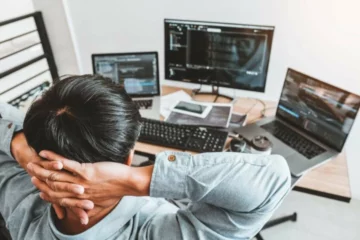1. Introduction: The Power of Symbols in Celebrations and Perception
Symbols are fundamental elements embedded within cultural and social contexts, serving as visual or conceptual representations that convey meaning beyond their immediate appearance. They act as shortcuts to shared values, beliefs, and histories, allowing communities and individuals to communicate complex ideas efficiently. For example, a national flag symbolizes sovereignty and collective identity, while a wedding ring signifies commitment and love.
Through their potent symbolism, these icons influence how we perceive ourselves and others, shaping our understanding of social norms and cultural identity. The collective experience of celebrating with symbols fosters a sense of belonging and reinforces cultural narratives. On an individual level, symbols can evoke emotions, memories, and expectations, subtly guiding our perceptions and responses.
This article explores how symbols—ranging from traditional icons to modern motifs—impact our perceptions and influence our choices during celebrations. We will examine their historical roots, psychological effects, and practical applications, illustrating these concepts with relevant examples such as fireworks, masks, floral arrangements, and contemporary symbols like Pinateros.
2. The Role of Symbols in Shaping Cultural Perceptions
a. Historical significance of celebration symbols across cultures
Throughout history, symbols have played a crucial role in marking significant events and fostering unity. In ancient China, dragon motifs symbolized power and auspiciousness during festivals like Lunar New Year, while in Western traditions, fireworks originated from ancient Chinese inventions to celebrate victories and important occasions. These symbols have persisted and evolved, often becoming emblematic of cultural identity.
b. How symbols reinforce cultural values and norms
Symbols serve as visual anchors that reinforce shared values. For instance, masks used in traditional festivals like Venice Carnival or Dia de los Muertos in Mexico not only conceal identities but also embody themes of transformation and remembrance. Floral arrangements, such as marigolds in Mexican celebrations, symbolize life and death, reinforcing cultural attitudes towards mortality and remembrance.
c. Case examples: traditional symbols like fireworks, masks, and floral arrangements
| Symbol |
Cultural Significance |
Example |
| Fireworks |
Celebration, victory, and hope |
Independence Day in the USA |
| Masks |
Transformation, anonymity, festivity |
Venice Carnival |
| Floral Arrangements |
Life, death, remembrance |
Marigolds during Día de los Muertos |
3. Visual and Environmental Cues as Symbols: Creating Context and Meaning
a. The importance of setting—street scenes and lively environments—in perception
The physical environment during celebrations acts as a powerful visual symbol that frames perceptions. Vibrant street scenes, decorated venues, and lively crowds create an immersive atmosphere that signals joy and community. For example, during festivals like Mardi Gras or Carnivals, the streets adorned with banners, lights, and performers reinforce the festive mood and encourage participation.
b. How visual cues influence emotional responses and expectations
Visual cues such as bright colors, dynamic movement, and familiar motifs activate emotional responses rooted in cultural memory. Bright reds and golds often evoke excitement and celebration, while familiar symbols like lanterns or banners set positive expectations. These cues can subconsciously influence individuals to feel more connected and to engage more deeply with the event.
c. Example: Street scenes during festivals creating grounded, lively atmospheres
A notable example is the Lantern Festival in China, where streets fill with glowing lanterns, dragon dances, and street food stalls. Such lively environments not only symbolize unity and prosperity but also create an ambiance that encourages social interaction and emotional upliftment. These environmental cues serve as silent messages reinforcing the celebration’s significance.
4. Symbols as Behavioral Triggers: How They Influence Choices and Actions
a. The subconscious impact of symbols on decision-making
Research indicates that symbols can trigger subconscious associations, influencing decisions without conscious awareness. For instance, a person exposed to images of fireworks may feel more inclined to participate in festivities or purchase celebratory goods, driven by the symbolic association with joy and success.
b. Symbols in marketing and event planning that guide behavior
Marketers leverage symbols to steer consumer behavior. During celebrations, brands incorporate culturally resonant symbols—like fireworks graphics, festive colors, or iconic motifs—to evoke anticipation and encourage spending. Event planners also use familiar symbols to guide attendee actions, such as placing decorative pinatas or banners at strategic points.
c. Example: Pinateros—modern symbols of celebration that evoke joy and anticipation
A contemporary example is the 🪅 cheers pinatas, which have become popular symbols of festivity across many cultures. Their colorful, playful design triggers feelings of excitement and anticipation, encouraging participation in communal activities. Such symbols serve as behavioral triggers, motivating people to engage, share, and celebrate together.
5. From Traditional to Modern Symbols: Evolution and Adaptation
a. How symbols evolve over time within celebrations
Symbols are dynamic, adapting to cultural changes and technological advances. Traditional symbols like masks or fireworks have been reinterpreted through contemporary media and styles. For example, digital fireworks and animated masks are now common, maintaining symbolic relevance while appealing to modern sensibilities.
b. Modern reinterpretations: Pinateros as a contemporary symbol of festivity and community
Pinateros, originally traditional pinatas, have evolved into symbols of joy that transcend cultural boundaries. Their vibrant, playful designs now represent community bonding, creativity, and shared celebration, often incorporating modern themes and artistic styles. They exemplify how traditional symbols can be adapted to resonate with contemporary audiences.
c. The blending of traditional symbols with new forms to influence perceptions
Blending traditional motifs with modern visuals enhances their impact. For example, integrating digital elements into pinata designs or combining them with social media campaigns amplifies their symbolic power, fostering a sense of freshness and relevance that influences perceptions and participation.
6. The Psychology Behind Celebration Symbols: Cognitive and Emotional Effects
a. How symbols activate memory and emotional associations
Symbols tap into our cognitive pathways, activating memories and emotional responses. The sight of a fireworks display can evoke feelings of nostalgia or excitement, rooted in past positive experiences. Similarly, familiar symbols reinforce cultural identity and shared history, strengthening emotional bonds.
b. The role of symbols in reinforcing positive perceptions of celebrations
Consistent use of positive symbols fosters favorable perceptions. Bright, colorful decorations and familiar motifs create an inviting atmosphere that encourages participation and social sharing. These associations reinforce the idea that celebrations are joyous and meaningful, influencing individual and collective attitudes.
c. Impact on individual choices—participation, spending, and social sharing
Research shows that emotionally charged symbols can increase willingness to participate, spend money, and share experiences on social media. For example, or decorated pinatas or fireworks encourage individuals to buy gifts, engage in activities, and broadcast their participation, driven by the emotional resonance of these symbols.
7. Non-Obvious Dimensions of Symbols in Shaping Perception
a. Cultural bias and differing interpretations of symbols
Symbols can carry different meanings across cultures. For instance, while red is associated with luck and celebration in China, it can symbolize danger or warning in other contexts. Recognizing these differences is vital for respectful and effective use of symbols in multicultural settings.
b. The subtle influence of environmental design and symbols on decision fatigue
Overexposure to symbols and environmental cues can lead to decision fatigue or desensitization. Carefully balancing visual stimuli ensures that symbols remain impactful without overwhelming participants, maintaining their ability to influence perceptions effectively.
c. Ethical considerations: Manipulation versus cultural expression
While symbols can influence behavior positively, ethical concerns arise regarding manipulation. Respectful and authentic use of cultural symbols fosters trust and preserves cultural integrity, rather than exploiting symbols solely for commercial gain.
8. Practical Implications: Designing Symbols to Influence Perception and Behavior
a. Strategies for event organizers and marketers to utilize symbols effectively
Effective strategies include integrating culturally resonant symbols into visual design, environmental layout, and marketing campaigns. Using familiar motifs, vibrant colors, and thematic decor enhances emotional engagement and guides participant behavior toward desired outcomes.
b. Case study: Incorporating street scenes and familiar symbols like Pinateros in celebration environments
For example, during cultural festivals, organizers can recreate street scenes featuring traditional elements like pinatas, lanterns, and performers. These visual cues foster immersion, reinforce cultural identity, and encourage active participation, illustrating how thoughtful symbol integration amplifies celebration impact.
c. Ensuring authentic and respectful use of cultural symbols
Authenticity is key. Collaborating with cultural representatives and understanding symbolism’s significance ensures respectful use. This approach enhances credibility and preserves the cultural essence, avoiding superficial or stereotypical representations.
9. Conclusion: The Interplay of Symbols, Perception, and Choice in Celebrations
“Symbols are the silent architects of perception, subtly guiding our choices and shaping our collective identities during celebrations.”
As demonstrated, symbols serve as powerful tools that influence how we perceive and participate in celebrations. From traditional icons like fireworks and masks to modern adaptations such as Pinateros, the deliberate design and placement of symbols can foster positive, meaningful experiences. Recognizing the psychological, cultural, and environmental dimensions of symbols allows organizers, marketers, and communities to craft authentic celebrations that resonate deeply and inspire shared joy.
Ultimately, mindful use of symbols not only enhances individual participation but also strengthens cultural bonds, ensuring that celebrations remain vibrant and relevant in an ever-evolving society.
 Follow
Follow

